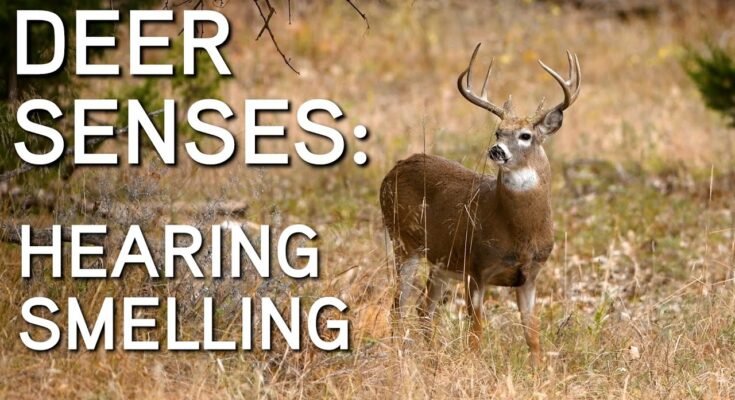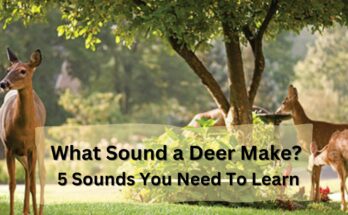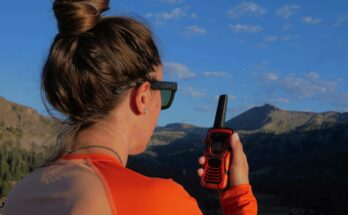When it comes to deer hunting, understanding and effectively utilizing wind conditions can significantly impact your success in the field. In this article, we’ll explore the importance of wind conditions in deer hunting and discuss key factors that can influence your hunting outcomes. By learning how wind affects deer behavior, selecting optimal hunting locations based on wind direction, and effectively managing scent, you’ll be well-equipped to increase your chances of a successful hunt.
Catalog
How Far Can Deer Smell?
Scientific research has shown that deer have a highly developed sense of smell, allowing them to detect scents from considerable distances. However, the specific range at which they can detect scents can vary depending on environmental conditions.
Understanding the general capabilities of a deer’s sense of smell can help hunters make informed decisions about scent control, stand placement, and hunting techniques. While deer can detect scents from relatively far distances, using proper scent control measures and positioning yourself advantageously can still greatly increase your chances of success.
Wind and Deer Hunting: Understanding the Basics
1) How much wind is too much for deer hunting?
To determine if wind conditions are suitable for deer hunting, there are several factors to consider. Evaluating wind strength based on factors such as wind speed, consistency, and predictability is essential. Strong winds can affect deer behavior and movement, making it more challenging to spot or approach them.
2) Hunting Windy Days during the Rut
A. The significance of the rut in deer hunting
The rut, or mating season, is a crucial time for deer hunting. During this period, bucks are more active, and their movements are influenced by various factors, including wind conditions. Hunting on windy days during the rut presents both advantages and challenges. It can help mask human scent and make it easier to approach deer, but it may also disrupt their usual behavior patterns.
B. Strategies for maximizing success during windy rut days
To maximize your chances of success on windy rut days, consider hunting in areas where deer are likely to seek shelter from the wind. Focus on natural funnels, edges of thick cover, or areas where deer can take advantage of windbreaks. Patience and persistence are key when hunting in windy conditions, as deer may be more cautious and on high alert.
3) The Best Wind Direction for Deer Hunting
Deer have an acute sense of smell and rely on the wind to detect potential dangers. Understanding how wind direction affects deer can help you plan your hunting strategy accordingly.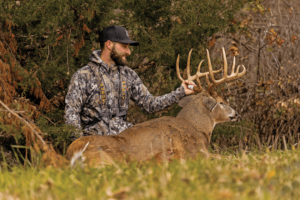
While there isn’t a one-size-fits-all answer, certain wind directions can work in your favor based on the hunting scenario. For example, hunting with a downwind approach allows your scent to be carried away from the deer, making it less likely for them to detect you. Crosswind situations can also be advantageous as they provide opportunities to intercept deer traveling between food sources and bedding areas.
Position yourself downwind of deer travel routes or near natural barriers that can create predictable wind currents. By strategically choosing your hunting spots based on wind direction, you’ll increase your chances of remaining undetected.
4) How to Hunt the Wind for Deer?
- To effectively hunt the wind, it’s essential to understand how wind patterns can distribute your scent. Wind can carry your scent in different directions, potentially alerting deer to your presence. Being aware of these patterns can help you position yourself advantageously.
- To minimize your scent’s detection, consider using scent control products, such as scent-eliminating sprays or clothing. Additionally, hunting in areas with consistent wind patterns can help disperse your scent and make it more challenging for deer to pinpoint your location.
- When setting up hammock stands or camping tents , position them to take advantage of the prevailing wind direction. This allows the wind to carry your scent away from areas where deer are likely to approach. Keep in mind the importance of maintaining proper shooting lanes and concealment to increase your chances of a successful shot.
The Buck and Doe Connection: How Far Can a Buck Smell a Doe in Heat?
Research suggests that bucks can detect pheromones emitted by a doe in heat from several hundred yards away. The exact range may vary depending on wind conditions, terrain, and other factors.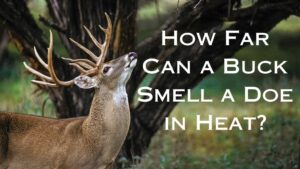
Understanding the distance at which a buck can detect a doe in heat can help hunters plan their strategies during the rut. By strategically positioning yourself in areas with known doe activity and utilizing scent attractants, you can increase your chances of attracting bucks to your hunting location.
Common Myths and Facts: Deer’s Sense of Smell
1) Can deer smell human urine?
Contrary to popular belief, deer can detect human urine, especially if it is recent and concentrated. It is advisable to avoid urinating near hunting areas to reduce the risk of alerting deer to your presence.
2) How far can deer smell molasses?
While deer have a keen sense of smell, claims about their ability to detect specific scents, like molasses, at extraordinary distances are often exaggerated. Their ability to smell and detect scents varies based on several factors such as wind, terrain, and the concentration of the scent.
Conclusion
In conclusion, mastering wind and scent factors is crucial for maximizing your success in deer hunting. By understanding wind conditions, selecting optimal hunting gear and locations, and effectively managing your scent, you can greatly increase your chances of a successful hunt. Remember to adapt your strategies based on the rut, wind direction, and prevailing wind patterns. With proper planning and attention to detail, you’ll be well on your way to a rewarding and fruitful deer hunting experience.
